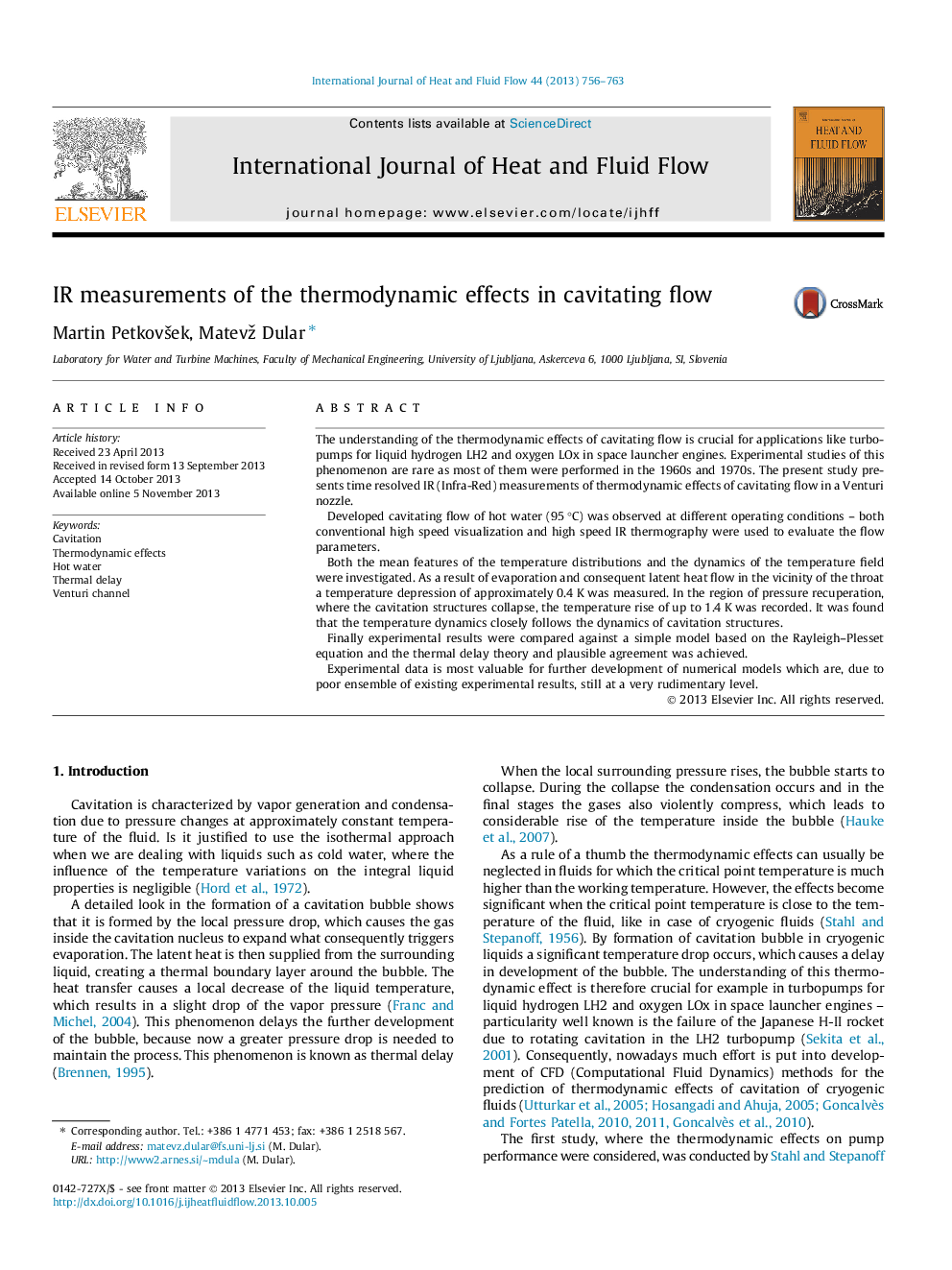| Article ID | Journal | Published Year | Pages | File Type |
|---|---|---|---|---|
| 655405 | International Journal of Heat and Fluid Flow | 2013 | 8 Pages |
•For the first time the temperature fields across the Venturi section were obtained.•The temperature dynamics was observed for the first time.•The theory of the thermal delay is valid.
The understanding of the thermodynamic effects of cavitating flow is crucial for applications like turbopumps for liquid hydrogen LH2 and oxygen LOx in space launcher engines. Experimental studies of this phenomenon are rare as most of them were performed in the 1960s and 1970s. The present study presents time resolved IR (Infra-Red) measurements of thermodynamic effects of cavitating flow in a Venturi nozzle.Developed cavitating flow of hot water (95 °C) was observed at different operating conditions – both conventional high speed visualization and high speed IR thermography were used to evaluate the flow parameters.Both the mean features of the temperature distributions and the dynamics of the temperature field were investigated. As a result of evaporation and consequent latent heat flow in the vicinity of the throat a temperature depression of approximately 0.4 K was measured. In the region of pressure recuperation, where the cavitation structures collapse, the temperature rise of up to 1.4 K was recorded. It was found that the temperature dynamics closely follows the dynamics of cavitation structures.Finally experimental results were compared against a simple model based on the Rayleigh–Plesset equation and the thermal delay theory and plausible agreement was achieved.Experimental data is most valuable for further development of numerical models which are, due to poor ensemble of existing experimental results, still at a very rudimentary level.
